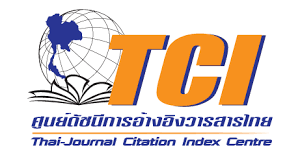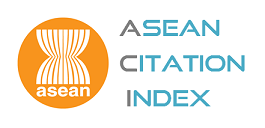Factors Affecting the Safety Perception of Commercial Pilot
- Kotchawan Trirattanavanich, Aviation Management, Civil Aviation Training Center as an affiliated institution of Suranaree University of Technology, Bangkok, Thailand, Corresponding author, E-mail: kotchawan.tri@gmail.com
- Thanyarat Khamproh, Aviation Management, Civil Aviation Training Center as an affiliated institution of Suranaree University of Technology, Bangkok, Thailand
- Anantachai Thongchareon, Aviation Management, Civil Aviation Training Center as an affiliated institution of Suranaree University of Technology, Bangkok, Thailand
- Attapol Moungsawad
Abstract
This research aims to study factors that affect the safety perception of commercial pilots as well as to study the relationship between personal characteristics and level of safety awareness. The samples in this study consisted of 145 commercial pilots. The statistics implemented in the data analysis included frequencies, percentage, means, standard deviation, T-test, One-way ANOVA, and enter multiple regression analysis.
The result of this research indicated that the participants with different personal characteristics such as gender, age, education level, marital status, working position, aircraft fleet, and working experience had no difference in the perception of the safety level. The study also analyzed a multiple regression by using enter method to understand the factors affecting the safety perception of the commercial pilots, including the company’s safety policy and the company’s operational norms. The company’s safety policy provided a positive influence in accordance with the safety perception of the commercial pilots at a significance level of 0.05. Therefore, if the pilots recognize more regarding the company’s safety policy, the safety perception will increase significantly. Similarly, the positive company’s operational norms also strongly influence the safety perception of the commercial pilots at a significance level of 0.05. Thus, if the pilots concern more about the company’s operational norms, the safety perception will increase. For this reason, the airlines should emphasize their safety policy and operational norms to increase the safety perception of the commercial pilots and ensure that their employees, passengers, and all relevant agencies can operate the flight to the highest degree of safety.
Keywords: Commercial pilot, Perception, Safety
References
Bureau of Air Safety Investigation (BASI). (1996). Human Factors in Fatal Aircraft Accidents. Retrieve from https://www.atsb.gov.au/media/28363/sir199604_001.pdf
Hair, J. F., Black, W. C., Babin, B. J. & Anderson, R. E. (2010). Multivariate Data Analysis A Global Perspective. Upper Saddle River, US: Pearson Prentice Hall.
Heinrich, H. W. (1931). Industrial Accident Prevention: A Scientific Approach. New York, US: McGraw-Hill.
International Air Transport Association (IATA). (2018). Forecast Predicts 8.2 Billion Air Travelers in 2037. Retrieved from https://www.iata.org/en/pressroom/pr/2018-10-24-02/
International Civil Aviation Organization (ICAO). (2018). Doc 9859 Safety Management Manual. (4th ed.). Montréal, Canada: International Civil Aviation Organization.
International Civil Aviation Organization (ICAO). (2020). Accident Rate. Retrieved from https://www.icao.int/safety/iStars/Pages/Accident-Statistics.aspx
Kebabjian, R. (2020). Causes of Fatal Accidents by Decade. Retrieved from http://www.planecrashinfo.com/cause.html
Kruajaturat, T., & Esichaikul, R. (2016). Perception of Employees towards Aviation Security System of Thai Airways International Public Company Limited at Suvarnabhumi International Airport. Modern Management Journal, 7(2), 69-82.
Reason, J. (1990). Human Error. Cambridge, UK: The Press Syndicate of The University of Cambridge.
Santimit, R., & Wongtong, R. (2018). Implementation of Occupational Safety and Environment Policy in Kanemitsu Pulley Co., Ltd. The Journal of Faculty of Applied Arts, 11(1), 62-70
Shappell, S. A., & Wiegmann, D. A. (2000). In The Human Factors Analysis and Classification System--HFACS. Washington DC. US: Office of Aviation Medicine.
SKYbrary. (2019). ICAO SHELL Model. Retrieved from https://www.skybrary.aero/index.php/ICAO_SHELL_Model
SKYbrary. (2020). The Human Factors “Dirty Dozen”. Retrieved from https://www.skybrary.aero/index.php/The_Human_Factors_%22Dirty_Dozen%22
Srisirarak, R., & Pasunon, P. (2016). Perception of the Organizational Climate and Organizational Citizenship Behavior of Department of Human Resources and Compliance Thai Airways International Public Co., Ltd. Business Review, 8(1), 61-83.
Sutarrom, P., & Nurittamont, W. (2018). Safety Awareness Effect on Safety Behavior in Work of Operation Workers of Polyfoam Group Co., Ltd. Valaya Alongkorn Review, 8(3), 114-125.
Suvanseng, K., (2000). General Psychology. Bangkok, Thailand: Aksornpittaya Publishing.
The Civil Aviation Authority of Thailand (CAAT). (2019). State Safety Programme (SSP). Bangkok: The Civil Aviation Authority of Thailand.
The Civil Aviation Authority of Thailand (CAAT). (2020). Weekly Air Transport Statistics Report During The COVID-19 Epidemic Situation. Retrieved March 1, 2021, from https://www.caat.or.th/th/archives/52135
Ursachi, G., Horodnic, I. A., & Zait, A. (2015). How Reliable Are Measurement Scales? External Factors with Indirect Influence on Reliability Estimators. Procedia Economics and Finance, 20, 679-686.

Indexed in


Search